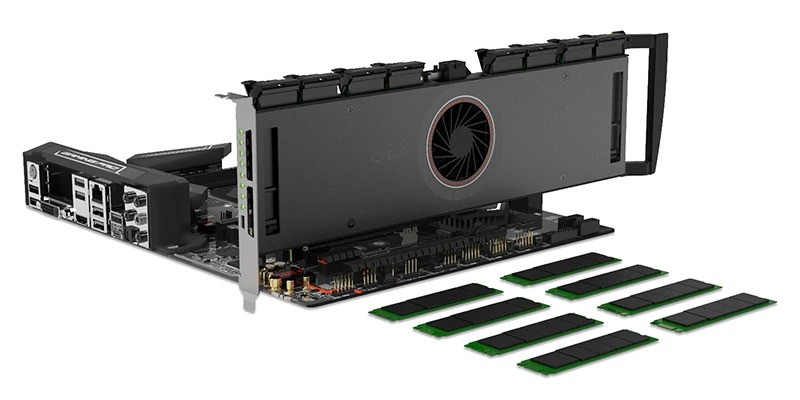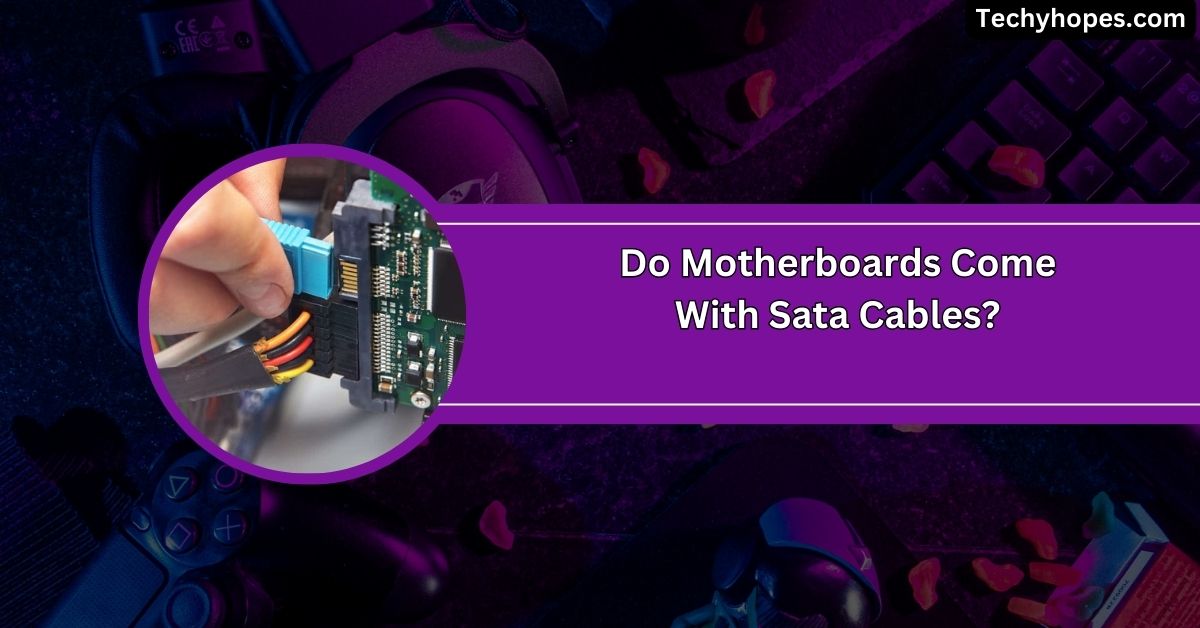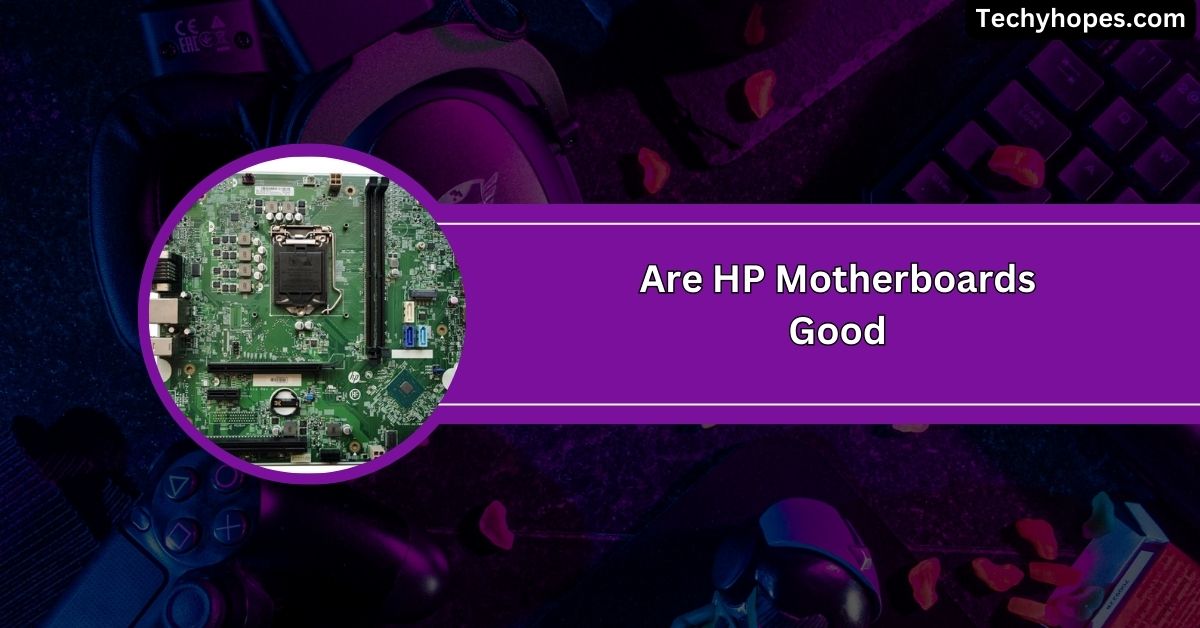PCIe bifurcation is a handy feature that enhances your system’s flexibility and performance by splitting a single PCIe slot into multiple smaller lanes.
A PCIe bifurcation motherboard list includes motherboards that support splitting a single PCIe slot into multiple lanes. This allows more devices like GPUs and NVMe drives to be connected, enhancing performance and flexibility.
This guide will explore how PCIe bifurcation works, its benefits, and which motherboards support this feature. It will also discuss how you can boost your system’s capabilities with PCIe bifurcation.
What is PCIe Bifurcation?
PCIe bifurcation divides the lanes of a PCIe slot into smaller segments. For example, an x16 slot can become two x8 or four x4 slots. This helps connect multiple devices like GPUs or SSDs efficiently without extra hardware.
Understanding PCIe Bifurcation
PCIe bifurcation helps you make better use of your motherboard’s slots. It divides lanes to connect more devices directly to the CPU, improving speed and flexibility. This is great for gaming, workstations, or high-speed storage setups.
Importance of PCIe Bifurcation
The primary advantages of PCIe bifurcation include:
- Enhanced Flexibility: Enables the connection of multiple devices through a single PCIe slot, optimizing the use of available lanes.
- Cost-Effectiveness: Reduces the need for additional hardware or expansion cards, leading to cost savings.
- Performance Optimization: Allows for efficient bandwidth distribution among connected devices, ensuring optimal performance.
Benefits Of Pcie Bifurcation

1. Enhanced Flexibility
It allows your motherboard to support multiple devices like SSDs or GPUs by splitting lanes, making it versatile for gaming, workstations, or server setups.
2. Cost Efficiency
Bifurcation enables one PCIe slot to support multiple devices, reducing the need for extra hardware, saving money, and simplifying your system’s design.
3. Improved Performance
PCIe bifurcation improves system performance by connecting devices directly to the CPU, reducing data transfer bottlenecks for faster processing and efficient multitasking.
4. Space Optimization
With bifurcation, fewer slots are needed for multiple devices, allowing compact builds while maintaining high performance and functionality in limited physical space.
5. Future-Proofing
Bifurcation-ready motherboards prepare you for future upgrades. They let you add more advanced components without replacing the entire system, ensuring long-term compatibility.
Top 10 Motherboards with PCIe Bifurcation Support
Based on the latest information and user reviews, here are the top 10 motherboards in 2025 that offer excellent PCIe bifurcation support:
- ASUS ROG Zenith II Extreme Alpha: This high-end motherboard supports PCIe bifurcation, making it ideal for high-performance setups.
- Gigabyte X570 AORUS XTREME: Known for its robust bifurcation options and excellent expansion capabilities, this motherboard is a solid choice for enthusiasts.
- ASRock X299 Taichi CLX: A versatile motherboard offering strong PCIe bifurcation support, suitable for users needing flexibility in their configurations.
- MSI Creator TRX40: Designed for content creators, this motherboard features multiple PCIe slots and bifurcation support, catering to demanding workflows.
- ASUS TUF X299 Mark 2: A budget-friendly option that doesn’t compromise performance, offering PCIe bifurcation for small-scale high-performance systems.
- Gigabyte Z490 AORUS XTREME WATERFORCE: This motherboard combines advanced cooling solutions with robust PCIe bifurcation support, which is ideal for overclocking enthusiasts.
- ASRock X570 Creator: Tailored for creators, it offers ample connectivity options and PCIe bifurcation support to handle intensive tasks.
- MSI MEG X570 GODLIKE: A top-tier motherboard with extensive features, including strong PCIe bifurcation support for high-end gaming and professional use.
- ASUS ROG Crosshair VIII Formula: Combining aesthetics with performance, this motherboard provides excellent PCIe bifurcation options for gaming enthusiasts.
- Gigabyte TRX40 AORUS XTREME: Designed for the AMD platform, it offers robust PCIe bifurcation support, catering to users requiring extensive expansion capabilities.
Read Out: Are All Graphics Cards Compatible With All Motherboards
Technical Aspects Of Pcie Bifurcation
PCIe bifurcation splits a single PCIe slot into multiple virtual slots. This allows multiple devices to share one slot, maximizing performance and improving flexibility for tasks like RAID setups or GPU connections.
Benefits Of Pcie Bifurcation Beyond Expansion
1. Resource Allocation
Efficiently assigns bandwidth to multiple devices, ensuring balanced performance and preventing bottlenecks, especially in complex systems like servers or advanced workstations.
2. Scalability
Quickly expand your system with additional GPUs or NVMe drives, making it future-ready without needing expensive hardware replacements.
3. Redundancy and Fault Tolerance
Supports reliable operations by splitting workloads across multiple devices, enhancing fault tolerance, and improving overall system stability.
4. Virtualization and Multi-Tenancy
Allows seamless hardware sharing for virtual machines, boosting multi-user performance and system efficiency.
Considerations for Choosing a PCIe Bifurcation Motherboard

1. Chipset Compatibility
Ensure the motherboard’s chipset supports PCIe bifurcation. Not all chipsets can split lanes, so confirming compatibility ensures your system runs smoothly and utilizes bifurcation properly for better performance.
2. Bifurcation Support
Check if the motherboard’s BIOS explicitly supports PCIe bifurcation. This feature allows you to split PCIe lanes for multiple devices, limiting your expansion options.
3. Expansion Slot Configuration
Look at the motherboard’s slot layout to ensure it accommodates your needs. Some motherboards allow x16 slots to split into x8 or x4, offering more device connections for high-performance setups.
4. Manufacturer Reputation and Support
Choose a reliable motherboard brand known for quality and customer service. Good support is essential for resolving issues with PCIe bifurcation or other motherboard features, ensuring your system runs efficiently.
5. Future Expansion and Upgradability
Select a motherboard that supports future upgrades, such as additional PCIe lanes or newer technologies. This ensures your setup can handle future hardware demands without needing a complete system rebuild.
Limitations and Challenges
PCIe bifurcation can be tricky. Not all motherboards support it, and compatible hardware is required. Issues like limited bandwidth or difficulty configuring settings in the BIOS may affect performance.
Bifurcation Issues
Bifurcation can cause issues like incorrect lane splitting or hardware incompatibility. BIOS settings may need adjustment, and not all devices support lane splitting, which can affect overall performance if not configured correctly.
Seeking Confirmation On PCIE Bifurcation Support
Check the motherboard’s specifications or user manual to confirm PCIe bifurcation support. You can also visit the manufacturer’s website or forums to find confirmation from other users who have tested bifurcation functionality.
Recommend A Motherboard With Bifurcation – Hardware
- ASUS ROG Zenith II Extreme Alpha: Excellent support for PCIe bifurcation, incredible for high-performance setups.
- Gigabyte X570 Aorus Xtreme: Offers robust bifurcation options and excellent expansion capabilities.
- ASRock X299 Taichi CLX: A solid choice for those needing flexibility and strong PCIe bifurcation support.
- MSI Creator TRX40: Designed for content creators, with multiple PCIe slots and bifurcation support.
- ASUS TUF X299 Mark 2: Budget-friendly option with PCIe bifurcation for small-scale high-performance systems.
Must Read: What Does Apple Call A Motherboard: Complete Guide In 2025
PCIe bifurcation motherboard list Gigabyte
- Gigabyte X570 Aorus Xtreme
- Gigabyte Z490 Aorus XTREME WATERFORCE
- Gigabyte TRX40 AORUS XTREME
- Gigabyte Z590 AORUS MASTER
- Gigabyte Z590 AORUS PRO AX
PCIe bifurcation motherboard list Asrock
- ASRock X299 Taichi CLX
- ASRock X570 Creator
- ASRock B550 Steel Legend
- ASRock Z490 Taichi
- ASRock X370 Professional Gaming
PCIe bifurcation motherboard list MSI
- MSI Creator TRX40
- MSI MEG X570 GODLIKE
- MSI MPG Z490 GAMING EDGE WIFI
- MSI MAG B550 TOMAHAWK
- MSI X299 PRO
PCIe bifurcation motherboard list ASUS
- ASUS ROG Zenith II Extreme Alpha
- ASUS ROG Crosshair VIII Formula
- ASUS ROG Strix X570-E Gaming
- ASUS TUF X299 Mark 2
- ASUS Prime X299-A II
PCIe Bifurcation Motherboards
PCIe bifurcation motherboards allow you to split a PCIe x16 slot into smaller lanes, like x8 or x4, which lets you connect more devices.
This feature boosts performance and flexibility, making it great for gaming, high-speed storage, or multi-GPU setups. Brands like ASUS, MSI, and Gigabyte offer motherboards with this capability.
PCIe 5.0 bifurcation card

A PCIe 5.0 bifurcation card allows you to split a PCIe 5.0 x16 slot into smaller lanes, like x8, x4, or x2. This improves performance and increases the number of connected devices, ideal for high-speed applications and storage expansion.
PCIe Bifurcation Riser
A PCIe bifurcation riser is a card that splits a PCIe slot into multiple smaller slots, allowing you to connect multiple devices, such as SSDs or GPUs, for better performance and flexibility.
PCIe bifurcation card
A PCIe bifurcation card divides a single PCIe slot into multiple smaller slots (e.g., x4 or x8). This card allows you to expand your system and add more devices without adding extra slots.
Asus PCIe bifurcation
Asus supports PCIe bifurcation through specific motherboards, allowing users to split a PCIe x16 slot into smaller configurations like x8+x8 or x4+x4+x4+x4, enhancing expansion and device connectivity for advanced builds.
PCIe bifurcation chipset
The PCIe bifurcation chipset splits PCIe lanes into smaller lanes for added flexibility. It ensures devices communicate correctly and operate at full potential, supporting multiple devices without overcrowding the motherboard’s slots.
How do I enable PCIe bifurcation?
To enable PCIe bifurcation, you must access your motherboard’s BIOS settings. Look for the PCIe configuration options and allow bifurcation, choosing how to split lanes (e.g., x16 to x8+x8 or other configurations).
Do all motherboards have PCIe slots?
Most modern motherboards have PCIe slots for expansion cards like GPUs, storage controllers, or network adapters. However, not all motherboards have the same number or type of PCIe slots, so check specifications carefully.
Can you put a PCIe x4 in an x16 slot?
Yes, you can put a PCIe x4 card in an x16 slot. The x16 slot will only use four available 16 lanes, but the card will function as expected.
You Must Know: Power Supply Not Turning On When Connected To Motherboard
PCIe bifurcation with Ryzen APU
For Ryzen APUs, PCIe bifurcation can be tricky, as most Ryzen chips don’t support bifurcation out of the box. However, some motherboards allow splitting lanes for added flexibility, especially in high-end setups.
PCIe bifurcation 4x4x4x4
PCIe bifurcation 4x4x4x4 splits a PCIe x16 slot into four x4 slots. This is useful for connecting multiple devices, such as NVMe SSDs or GPUs, improving performance without needing extra PCIe slots on the motherboard.
ASUS PCIe bifurcation table
The ASUS PCIe bifurcation table shows how different slots on a motherboard can be split into multiple configurations (e.g., x16 to x8+x8 or x4+x4+x4+x4), helping users understand the maximum expansion options available for their setup.
PCIe Bifurcation for all NVMe Build.

PCIe bifurcation helps divide a PCIe x16 slot into smaller lanes like x4 or x8, allowing you to connect multiple NVMe drives for faster storage in your build.
Bifurcation on which MB’s
Motherboards supporting bifurcation allow splitting a PCIe x16 slot into smaller lanes, offering flexibility in connecting multiple devices. Look for motherboards with BIOS options for bifurcation support, like those from ASUS, MSI, or Gigabyte.
Does My Motherboard Support PCIe Bifurcation?
To check if your motherboard supports PCIe bifurcation, you need to look at its specifications or access the BIOS settings. Motherboards with bifurcation support can split a single x16 slot into multiple smaller lanes. You can also visit the manufacturer’s website for confirmation.
ASUS WRX90E-SAGE x8/x8 Bifurcation
The ASUS WRX90E-SAGE supports x8/x8 bifurcation, allowing you to split a PCIe x16 slot into two x8 lanes. This is ideal for high-speed data transfer and multi-device setups and is perfect for server or workstation use.
Any LGA1700 motherboards with x4x4x4x4 bifurcation?
Some LGA1700 motherboards support x4x4x4x4 bifurcation, splitting a PCIe x16 slot into four x4 lanes. This allows for connecting multiple NVMe drives or other expansion cards, ideal for high-performance storage setups.
X570 Motherboards with Bifucration support
X570 motherboards like the ASUS ROG Crosshair VIII Hero and MSI MEG X570 GODLIKE support PCIe bifurcation. These motherboards allow users to split x16 lanes into x8+x8 or other configurations, offering more expansion for NVMe SSDs and GPUs.
Need help understanding Asrock PCIE bifurcation
ASRock PCIe bifurcation allows users to split PCIe lanes, creating more flexible slot configurations. For example, an x16 slot can be divided into smaller x8 or x4 slots for better performance, especially in high-end builds or servers.
FAQs
1. Which motherboard supports PCIe bifurcation?
Motherboards from ASUS, MSI, Gigabyte, and ASRock support PCIe bifurcation. They offer options to split PCIe slots to connect multiple devices.
2. Should I enable PCIe bifurcation?
Enabling PCIe bifurcation is helpful if you need more expansion options, like connecting multiple NVMe drives or additional PCIe cards for your system.
3. How do I enable PCIe bifurcation in BIOS?
To enable PCIe bifurcation, enter the BIOS settings, find the PCIe configuration section, and allow bifurcation or lane-splitting options. Save changes to activate.
4. What does PCIe bifurcation do?
PCIe bifurcation divides a single PCIe slot into smaller lanes, allowing you to connect multiple devices, such as NVMe drives or GPUs, improving flexibility.
5. Can you split PCIe slots?
Yes, PCIe slots can be split using bifurcation, which divides a larger slot (x16) into smaller lanes (x8 or x4), allowing multiple devices to connect.
6. Motherboards that support PCIe 3 bifurcation – two x16 slots, each as x8 + x8?
Motherboards like the ASUS ROG Crosshair and MSI X299 series support PCIe 3 bifurcation, splitting x16 slots into x8 + x8 for additional expansion.
7. AMD (and even Intel) motherboards that support bifurcation (8x/8x split) through bios option
Many AMD and Intel motherboards, including the X570 and Z490 series, support PCIe bifurcation via BIOS, allowing users to split slots into x8/x8 for improved performance.
8. Suggestion motherboard for a server with PCIe Bifurcation
For a server with PCIe bifurcation, consider the ASUS WRX90E-SAGE or the ASRock X299 Taichi, which supports multiple NVMe drives and GPU lanes.
9. Does anyone know of good motherboards that support PCIe bifurcation?
Popular motherboards supporting PCIe bifurcation include the ASUS ROG, MSI Creator, and ASRock X299 series, offering flexibility for multiple device connections.
10. Any AM5 Motherboards that allow PCIe 4x4x4x4 bifurcation from an x16 slot?
Yes, some AM5 motherboards, like the ASUS ROG Crosshair series, support PCIe bifurcation from an x16 slot into four x4 lanes for high-speed storage or multi-card setups.
Conclusion
In conclusion, PCIe bifurcation enhances system performance by splitting PCIe slots into multiple lanes, allowing for more devices and better resource management. Popular motherboards from ASUS, MSI, Gigabyte, and ASRock support this feature, making it ideal for expansion and high-performance builds.





